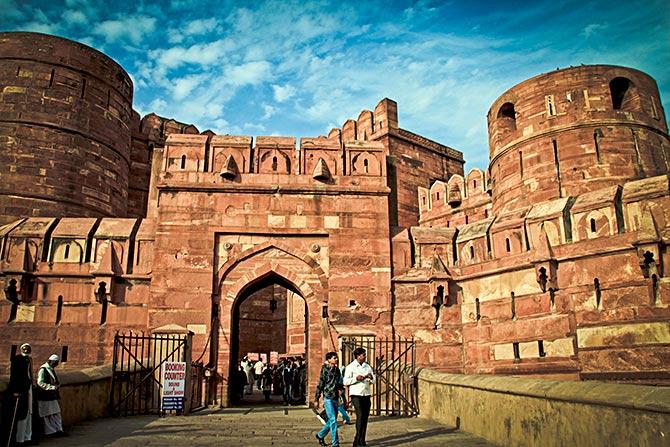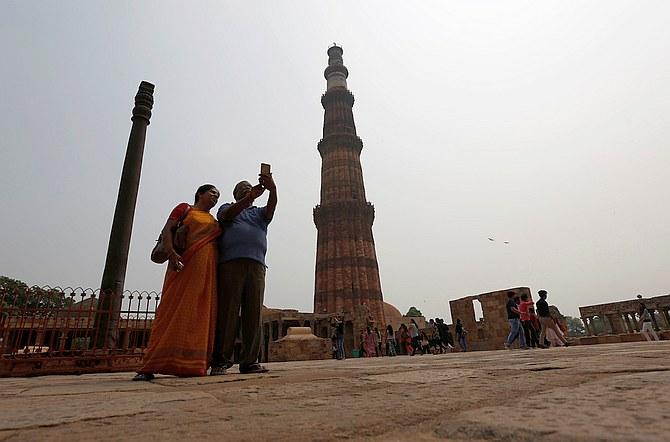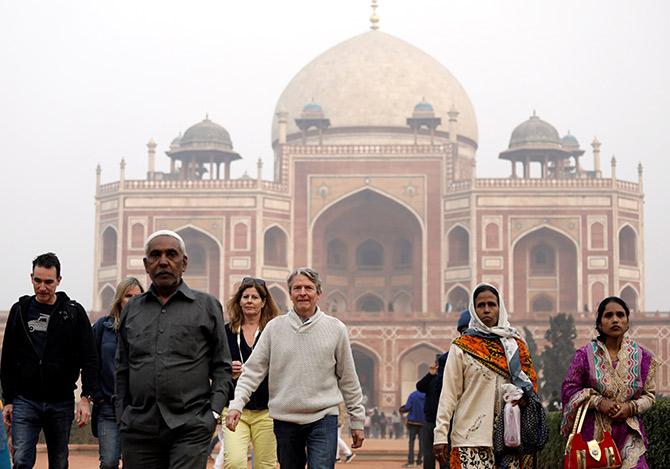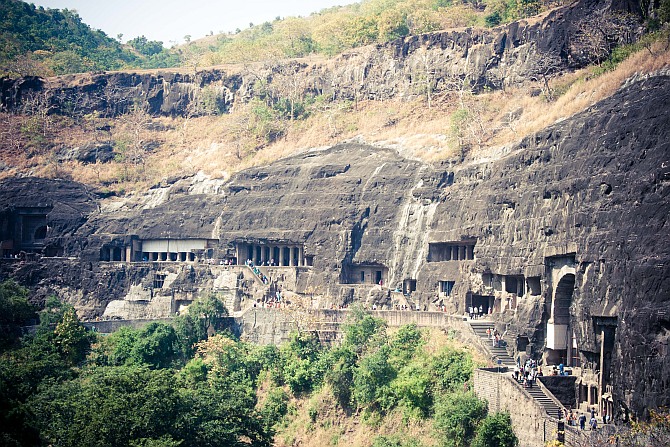 | « Back to article | Print this article |
Check out which monuments make the most money for the government.
The top revenue-generating monuments during 2015-2018 include the Taj Mahal, Agra Fort, Qutub Minar, Red Fort and Humayun's Tomb, Culture Minister Mahesh Sharma informed Parliament on February 5, 2019.
Responding to a query in the Rajya Sabha, he said along with these monuments the others in the top 10 include the Sun Temple Konark, group of monuments in Mahabalipuram, Ellora caves, group of monuments in Khajuraho, and the Ajanta caves in Aurangabad.
The Archaeological Survey of India spent Rs 2.3746 billion in 2015-2016 for the conservation of protected monuments while Rs 3.1176 billion was spent in 2016-2017 and Rs 4.1076 billion in 2017-2018 for the purpose.
Check out the top revenue generating monuments:

Commissioned in 1632 by the Mughal emperor Shah Jahan, to house the tomb of his favourite wife Mumtaz Mahal, the Taj Mahal is an ivory-white marble mausoleum on the south bank of the Yamuna river in Agra.

Agra fort was the main residence of the Mughal emperors until 1638 when the capital shifted from Agra to Delhi.
The last Indian rulers to have occupied the fort were the Marathas.

A minaret that forms part of the Qutab complex, the Qutub Minar, is situated in the Mehrauli area of Delhi.
It is a 239.5 feet tall tapering tower of five storeys with a 47 feet base diameter, reducing to 9 feet at the top of the peak. It also contains a spiral staircase of 379 steps.

The Red Fort was the main residence of the Mughal emperors for over 200 years, from 1639 to 1856.
The fort was constructed in 1639 by Shah Jahan as the palace of his fortified capital Shahjahanabad.

Humayun's tomb, also known as Humayun ka maqbara, is the tomb of the Mughal emperor Humayun in Nizamuddin East, Delhi.
The tomb was commissioned by Humayun's first wife and chief consort, empress Bega Begum, in 1569-1570. It was the first garden-tomb on the Indian subcontinent.

The Konark Sun Temple dates back to the 13th century CE and is attributed to King Narasingha Deva I of the Eastern Ganga dynasty about 1250 CE.
Dedicated to Surya, the sun god, what remains of the temple complex has the appearance of a 100 foot high chariot with immense wheels and horses, all carved from stone.

Built during the Pallava dynasty, the group of monuments at Mahabalipuram are a collection of 7th and 8th century CE religious buildings in the coastal town of Mamallapuram, Kanchipuram district, Tamil Nadu.
The site has 400 ancient monuments and Hindu temples, including one of the largest open-air rock reliefs in the world: The Descent of the Ganges or Arjuna's Penance.
There are Ratha temples with monolithic processional chariots, built between 630 and 668; mandapa viharas (cave temples) with narratives from the Mahabharata and Shaivic, Shakti and Vaishna inscriptions in a number of Indian languages and scripts; rock reliefs; stone-cut temples built between 695 and 722, and archaeological excavations dated to the 6th century and earlier.

The Ellora Caves, located in Maharashtra's Aurangabad district, are one of the largest rock-cut monastery-temple cave complexes in the world, featuring Buddhist, Hindu and Jain monuments, and artwork, dating from the 600-1000 CE period.
Cave 16 features the largest single monolithic rock excavation in the world, the Kailasha temple, a chariot shaped monument dedicated to Shiva.

Famous for their nagara-style architectural symbolism and their erotic sculptures, the Khajuraho monuments are a group of Hindu temples in Chhatarpur, Madhya Pradesh.
The temples were dedicated to two religions, Hinduism and Jainism, suggesting a tradition of acceptance and respect for diverse religious views among Hindus and Jains in the region.

Located in Maharashtra's Aurangabad district, the Ajanta Caves are about 30 rock-cut Buddhist cave monuments which date from the 2nd century BCE to about 480 CE.
The caves include paintings and rock-cut sculptures described as among the finest surviving examples of ancient Indian art, particularly expressive paintings that present emotion through gesture, pose and form.
Reportage about Minister Sharma's reply: PTI.
Information about the monuments: Kind courtesy Wikipedia.
Production: Ashish Narsale/Rediff.com
